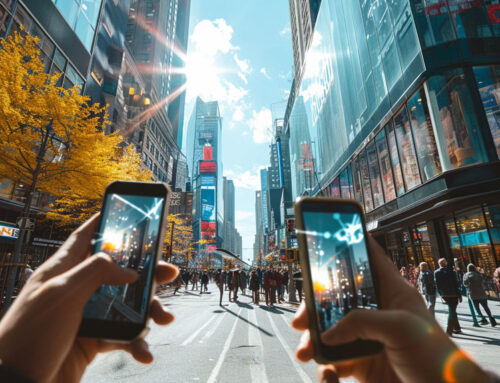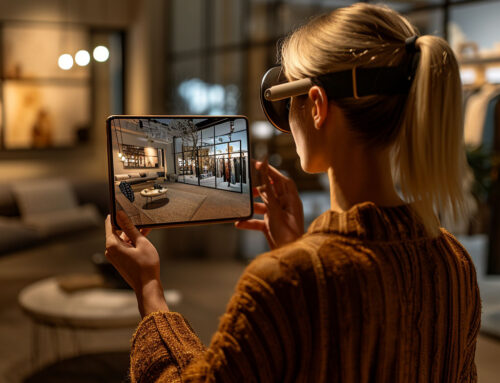Captivating Audiences: Implementing AR for Digital Marketing Success
Table of Contents
1. Introduction
In the ever-evolving world of digital marketing, staying ahead of the competition and captivating your audience is essential for success. One innovative tool that has taken the marketing world by storm is Augmented Reality (AR). AR technology enables businesses to create immersive and interactive experiences that engage customers like never before. In this article, we will explore the concept of using AR for digital marketing and provide insights into how you can implement it for your own marketing success.
2. What is Augmented Reality (AR) in Digital Marketing?
Augmented Reality (AR) is a technology that overlays digital content, such as images, videos, or 3D models, onto the real world. This is typically achieved through the use of smartphones, tablets, smart glasses, or other AR-enabled devices. In digital marketing, AR is used to enhance the consumer experience by providing interactive and immersive content that blurs the line between the physical and digital worlds.
3. Benefits of Using AR in Digital Marketing
Utilizing AR in your digital marketing strategy offers numerous benefits, including:
- **Enhanced Engagement**: AR campaigns capture the audience’s attention and keep them engaged for longer periods.
- **Personalization**: AR allows for highly personalized marketing experiences tailored to individual preferences.
- **Increased Interactivity**: Users can interact with products virtually, which boosts product understanding and confidence.
- **Memorability**: AR experiences are more likely to be remembered, helping with brand recall.
- **Competitive Advantage**: Being an early adopter of AR can set your brand apart from competitors.
4. How to Implement AR in Your Digital Marketing Strategy
4.1. Identifying Your Target Audience
Before implementing AR in your digital marketing strategy, it’s crucial to understand your target audience. Identify their preferences, needs, and the platforms they use to ensure your AR content reaches the right people.
4.2. Creating Engaging AR Content
The key to successful AR marketing is creating captivating content. This may involve interactive product demonstrations, virtual try-ons, gamified experiences, or storytelling through AR.
4.3. Choosing the Right AR Platform
Select an AR platform that aligns with your marketing goals and target audience. Whether it’s mobile apps, web-based AR, or social media filters, choose the platform that maximizes your reach.
4.4. Promoting Your AR Campaign
Promotion is crucial to the success of your AR campaign. Utilize various marketing channels, including social media, email marketing, and influencers, to spread the word about your AR experiences.
5. Frequently Asked Questions (FAQ)
5.1. What is the difference between AR and VR in digital marketing?
While both AR and VR provide immersive experiences, AR overlays digital content onto the real world, whereas VR creates entirely virtual environments. AR is more suitable for enhancing real-world experiences, while VR is often used for entirely simulated ones.
5.2. Do I need advanced technical skills to use AR in digital marketing?
Not necessarily. Many AR platforms offer user-friendly tools for creating content without requiring advanced technical skills. However, having a basic understanding of AR technology can be beneficial.
5.3. How can I measure the success of my AR marketing campaigns?
Measure success through metrics such as engagement rates, conversion rates, user feedback, and customer satisfaction. Track how AR impacts your overall marketing goals and ROI.
5.4. Are there any industries where AR is particularly effective for marketing?
AR can be effective in various industries, including retail, fashion, real estate, automotive, and entertainment. It’s particularly useful for products or services that benefit from interactive demonstrations or visualizations.
5.5. What are some notable examples of successful AR marketing campaigns?
Several brands, such as IKEA, Pokémon GO, and Snapchat, have executed successful AR marketing campaigns. These campaigns leveraged AR to engage users, promote products, and drive brand awareness.
6. Case Study: Success with AR in Digital Marketing
AR Custom Hats
AR model of clients Custom Hat was used to create an AR filter that allowed the customer to wear the hat digitally and change the colors and making purchases.
7. Conclusion
Augmented Reality presents a powerful opportunity for digital marketers to captivate their audiences in creative and memorable ways. By understanding the benefits, implementing AR effectively, and keeping up with the latest AR trends, you can stay at the forefront of digital marketing and create immersive experiences that leave a lasting impression on your target audience. Start exploring the possibilities of AR in your digital marketing strategy today and unlock new avenues of engagement and growth for your brand.





Leave A Comment
You must be logged in to post a comment.